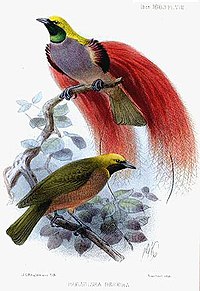
Photo from wikipedia
Abstract Drought and competition affect how morphological and physiological traits are expressed in plants. California plants were previously found to respond less negatively to resource limitation compared to invasive counterparts.… Click to show full abstract
Abstract Drought and competition affect how morphological and physiological traits are expressed in plants. California plants were previously found to respond less negatively to resource limitation compared to invasive counterparts. In a glasshouse in Santa Cruz, CA, USA, we exposed five native California C3 grassland species to episodic drought and competition (via five locally invasive species). We hypothesized that leaf morphology would be more affected by competition, and leaf photosynthetic gas exchange more so by drought, consistent with optimal partitioning and environmental filter theories. We expected that traits would exhibit trade‐offs along a spectrum for resource conservatism versus acquisition. Bromus carinatus had greater photosynthetic recovery, while Diplacus aurantiacus had lower percent loss of net assimilation (PLA) and intrinsic water‐use efficiency (iWUE) during drought and competition simultaneously compared to just drought. Stipa pulchra and Sidalcea malviflora gas exchange was unaffected by drought, and leaf morphology exhibited drought‐related adjustments. Lupinus nanus exhibited trait adjustments for competition but not drought. Functional traits sorted onto two principal components related to trade‐offs for resource conservatism versus acquisition, and for above‐ versus belowground allocation. In summary, morphological traits were affected by competition and drought, whereas physiological traits, like leaf gas exchange, were primarily affected by drought. The grassland plants we studied showed diverse responses to drought and competition with trait trade‐offs related to resource conservatism versus acquisition, and for above‐ versus belowground allocation consistent with optimal partitioning and environmental filter theories. Diplacus aurantiacus experienced competitive release based on greater iWUE and lower PLA when facing drought and competition.
Journal Title: Ecology and Evolution
Year Published: 2022
Link to full text (if available)
Share on Social Media: Sign Up to like & get
recommendations!